What does trauma-informed teaching have to do management?
As part of our work with K-12 schools on SEL, we train teachers on trauma-informed teaching, which means teaching in a way that is sensitive and responsive to the many students who have experienced trauma.
A trauma-informed teaching practice provides tools that organization leaders can also learn a lot from when teaching or managing adults.
After we understand what trauma is and how it impacts us, we can change how we do things so that we make work a safe and supportive place for those who have experienced trauma.
If you'd like more information, please come to our trauma-informed training, hosted by Generation Schools Network.
Below, I've summarized the Top 7 Tips For Trauma-Informed Management. Spoiler alert: making these changes also helps the people who have not experienced trauma!
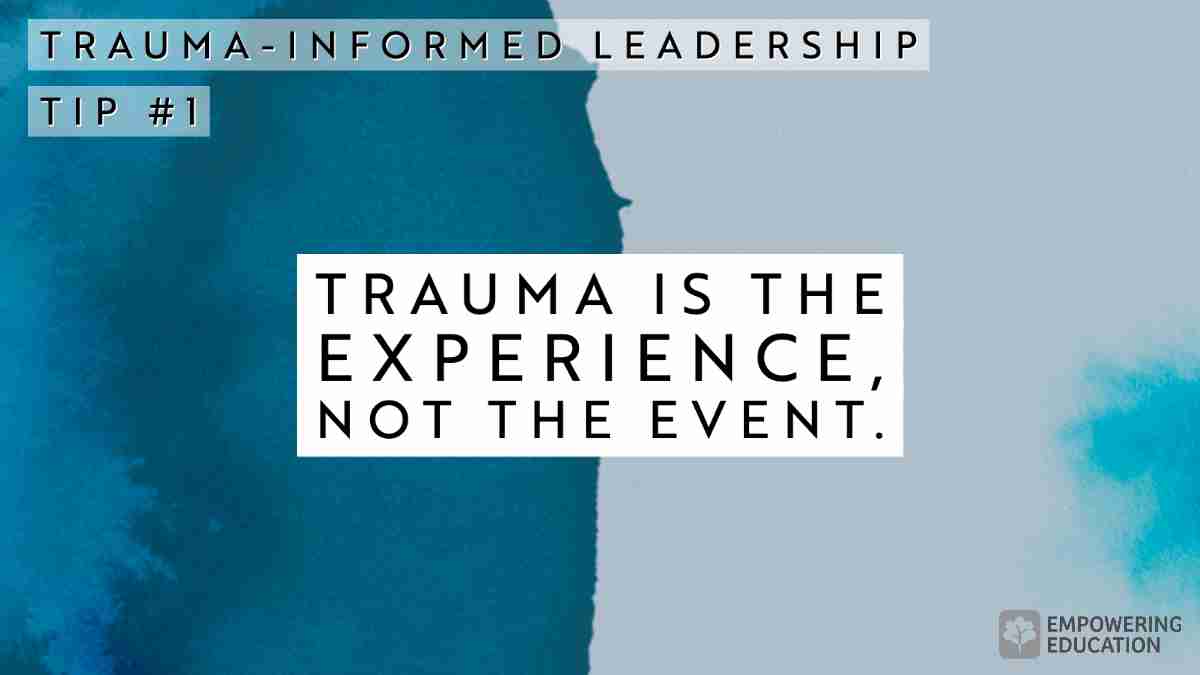
1. Trauma is the experience, not the event.
Notice that it’s the experience of the event, not the event itself. You and a colleague may have experienced the same childhood events, but it might have been traumatic for one of you though not the other.
“Trauma is the experience of an event that overwhelms the nervous system and overpowers our defense systems.”
Think twice before saying some version of “well, I had that happen to me and it was just fine…”
What qualifies as trauma?
A helpful way to think about it is that there is “uppercase T” and “lowercase t” trauma. In this series, we mostly refer to the Trauma that can result from abuse, community violence, etc. However, the trauma following events like bullying, long-term stress, and the loss of a significant relationship is not less valid. These traumatic events can have lasting and important effects on us, even if they seem less dramatic.
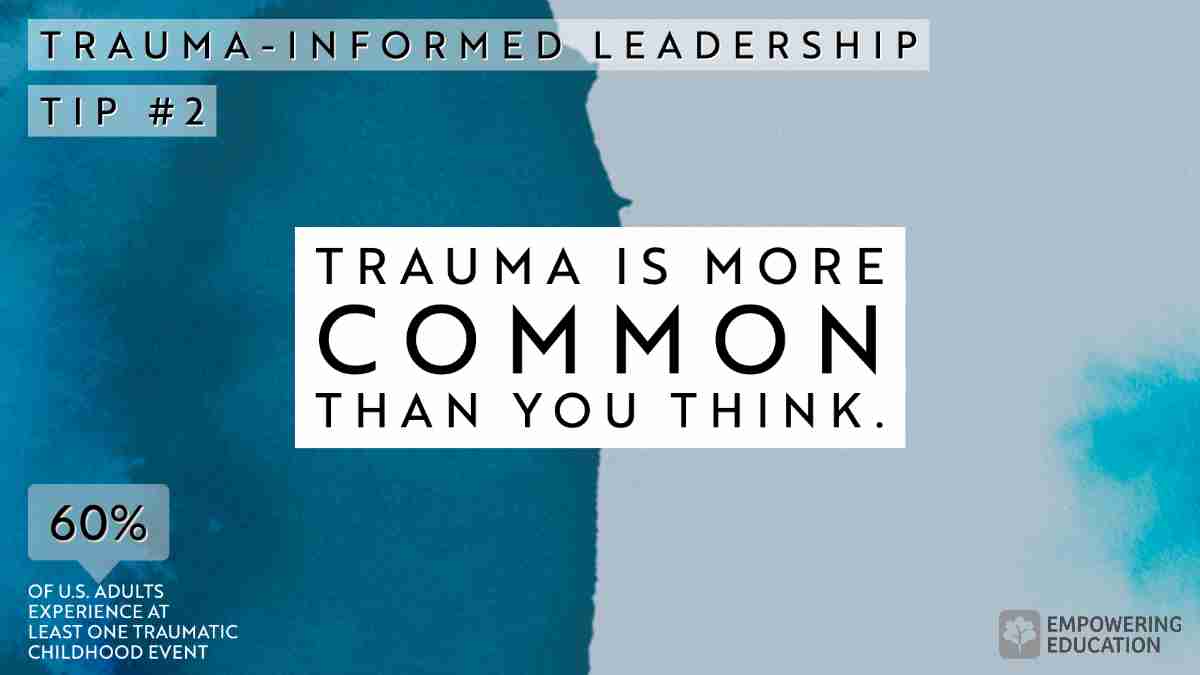
2. Trauma is more common than you think.
Before reading on, understand that reading about this can be disturbing. If these statistics remind you of your own trauma, know that you are not alone and help is available.
- 60% of US adults experienced at least one traumatic childhood event
- 16% experienced four or more traumatic events
- 25% experienced physical abuse
- 20% experienced sexual abuse
- 20% grew up around substance abuse
- 10% witnessed violence in the home
- 10% were physically or emotionally neglected
These numbers inspire us to continue our social and emotional work with schools. Hopefully, they inspire you to consider how your work as an educator or leader can be more trauma-informed.
As we discussed, trauma can occur from less dramatic events than the ones listed above. It’s also important to know that the trauma can be treated. To learn more about these statistics, including trauma related to inequity, go to the CDC's website.
At your next meeting, remember the high likelihood someone on your team has experienced one or many of the above traumas.
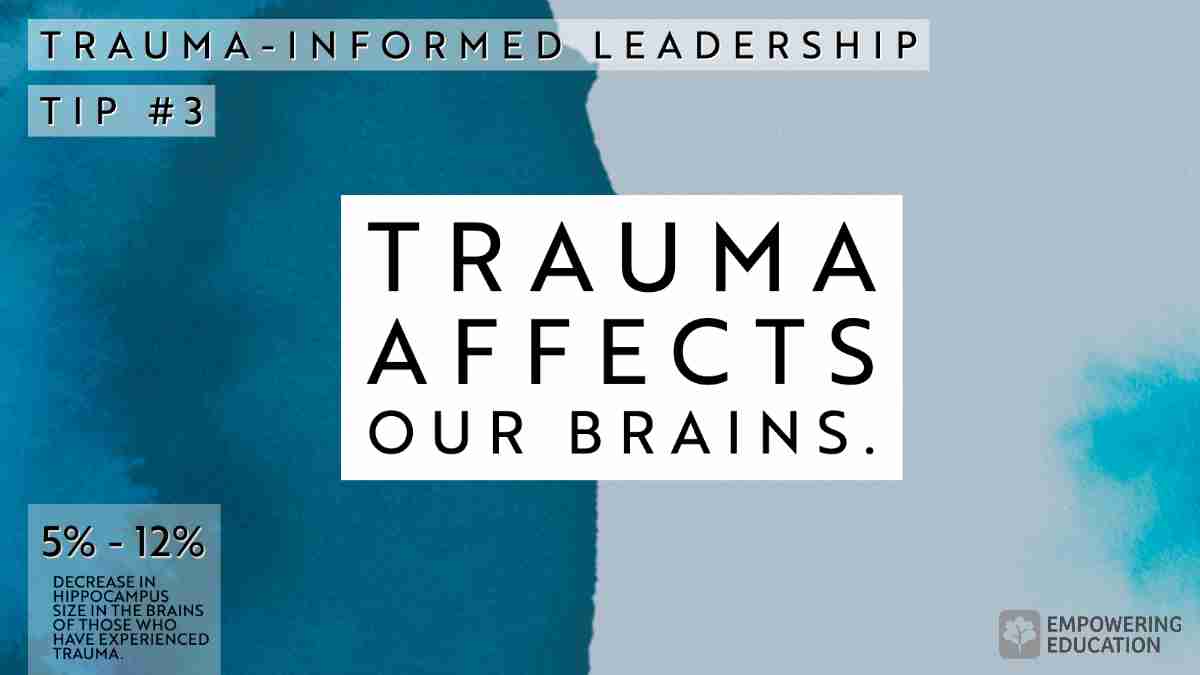
3. Trauma Affects our Brains
Clearly, trauma can happen at any time in our lives, so why focus on what occurs in childhood? The issue with childhood trauma is that it happens while our brains are developing and thus impacts the brain's growth.
For example, Dr. J. Douglas Bremner’s studies showed anywhere from a 5% - 12% decrease in hippocampus size in the brains of those who have experienced trauma. When left untreated, such impairment to the limbic system is significantly likely to have a lifelong impact on overall health and well-being.
Our brain can be thought of as having three main systems:
- The brainstem, or “lizard brain,” which handles instincts;
- The limbic system, which is responsible for emotions;
- The neocortex, or the “wizard brain,” where all the fancy thinking happens.
Trauma affects the limbic system, and at times the brainstem. When this is happening, it can be hard to use the wizard brain, making thoughtful decision-making challenging.
That said, the lizard brain and limbic systems are very useful during the body’s natural fight-or-flight response to danger. For someone who has experienced trauma, just remembering that trauma can activate the same portions of the brain as during a survival response.
As managers, how can we minimize “triggering” lizard brains and help our colleagues stay in their wizard brain? The first step is awareness, so you’re on the right track!
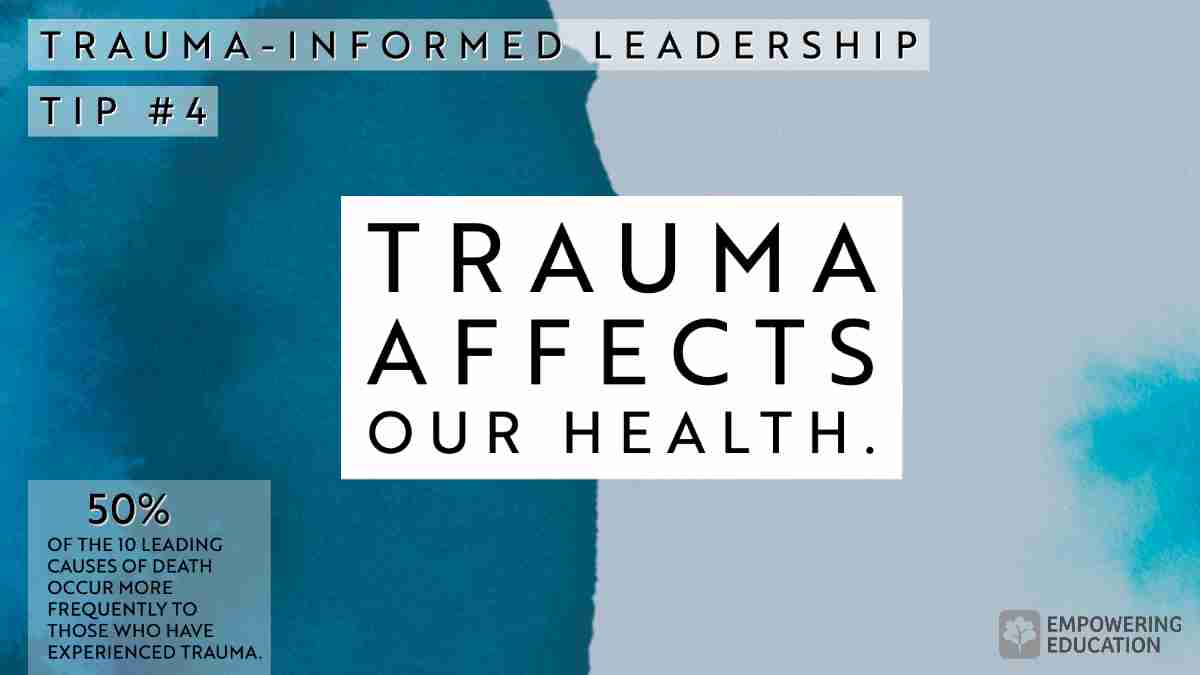
4. Trauma Affects our Health
While many of us have a vague belief that our minds and bodies are connected, with trauma, the evidence is clear: trauma leads to health problems.
Half of the leading causes of death occur more frequently to those who have experienced trauma. According to the CDC, up to 1.9 million cases of heart disease and 21 million cases of depression could have been avoided by preventing childhood trauma.
Childhood trauma changes our brain. It turns out that our brains are part of our bodies! Those neural pathways that were negatively impacted by untreated trauma are pathways that not only affect our thoughts and actions but also how our bodies handle themselves, particularly in stressful situations.
Stress at work is inevitable. As a manager, remind everyone -- including yourself -- to take care of your bodies during these times. Plan breaks, provide nourishing food, and encourage exercise.
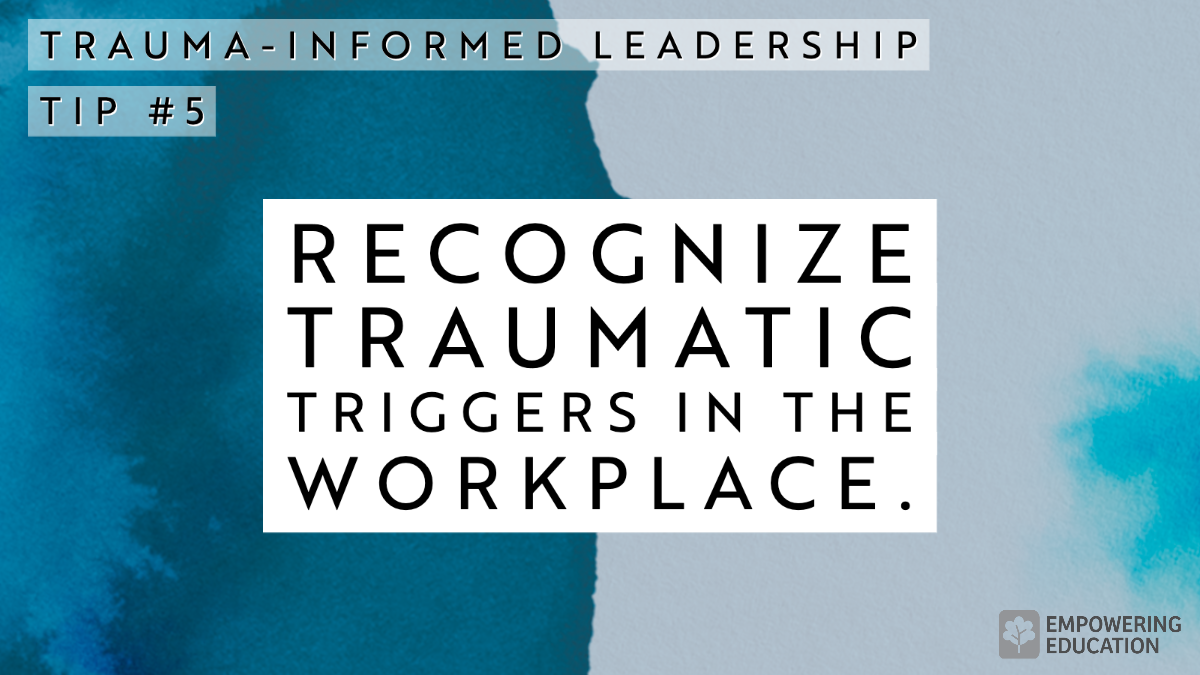
5. Recognize Traumatic Triggers in the Workplace
Of course, a dangerous or violent situation can particularly affect someone who has been impacted by trauma. But simply remembering trauma can bring us back into our “lizard” brains, making thoughtful work almost impossible.
What might trigger such memories at work?
A. Powerlessness.
Often those who experienced trauma were in a situation in which they were unable to defend themselves. Having no say in your work can be subtly reminiscent of those experiences. Many times, a boss must tell us what to do, but that does not have to mean employees are powerless.
B. Lack of safety.
Along with workplaces that lack physical safety, there are environments in which people feel unsafe because of harassment or simply because they are not positively regarded. If employees' views are not respected, or they are teased in an unwelcome manner, this may trigger a traumatic response.
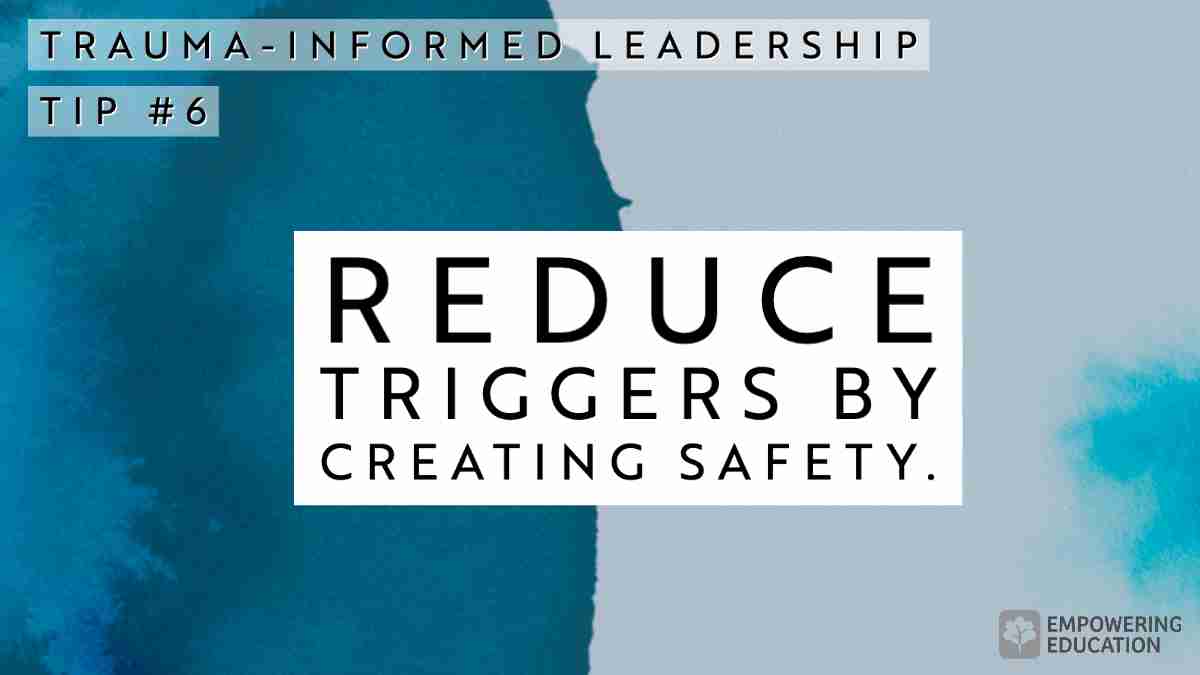
6. Reduce Triggers by Creating Safety At Work
It’s hard to argue with creating a safe workplace culture, but it’s also hard to pin down what that looks like. In trauma-informed schools, we use the following definition.
A trauma-informed school is one where:
- The adults recognize and respond to those who have been impacted by trauma;
- Students are given the tools and support to cope with trauma;
- There is an underlying culture of respect and support.
With adult learners in school or the workplace, this definition stands. While it’s not a manager’s responsibility to teach employees how to cope, he or she should leave space for employees to be able to use the tools they do have. Here are some ideas:
A. Be thoughtful about proximity.
Avoid walking up behind people or surprising them. In the same vein, avoid jokes about abuse.
B. Be predictable.
While many organizations—especially now—must face uncertainty, managers can manage in a predictable manner. Make expectations clear, set up routines that employees can count on, and be clear about what’s happening when changes are afoot.
C. Create a warm and welcoming environment.
A quick hello and check-in with each team member can go a long way. Also, consider the space that employees work in.
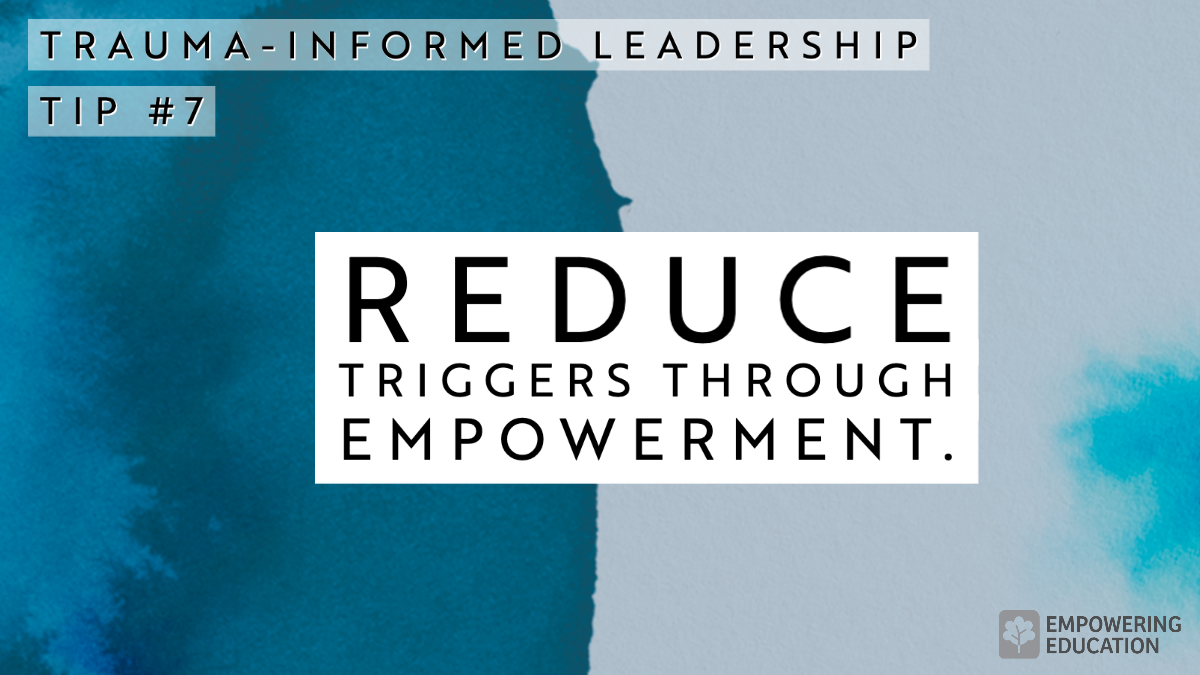
7. Reduce Triggers in the Workplace Through Empowerment
Did you notice that these tips would likely help employees who have not been impacted by trauma? Keep that in mind as you review four more ideas:
A. Leave space for feelings.
We might think that difficult feelings don’t have a place at work, but of course, they are happening! When employees hear tough news, there are feelings. Simply acknowledging this can be powerful: “I imagine that hearing we have to move our office location may be frustrating for some.”
When someone tells you that they are upset or even just frustrated, allow them to express their feelings. Paraphrase and repeat back what they are saying: “It sounds like you are feeling angry about the situation…”
Often it is validation that people want, not a “solution.”
B. Empower employees.
Often managers do need to call the shots, but it’s easy to call shots that don’t need calling. In other words, avoid micromanaging. Consider how you can give employees a choice about how they work.
C. Know your own triggers.
Whether you’ve experienced trauma or not, there are likely some things that get you upset. Know what they are and when you are upset, model the behavior you want from your employees. Consider stating your feelings and transparently taking the time and space to manage them: “That was a really tough call and I’m feeling pretty angry. Let’s hit pause and resume in an hour. I want to decompress.”
D. Take responsibility.
People impacted by trauma often could not trust the caregivers who raised them. Be someone they can count on. When mistakes happen, take responsibility. When you mess up, apologize.
Conclusion
As we discussed in this series, trauma is widespread and has impacted a majority of us significantly. Although the workplace has changed dramatically in the last three years, this change is also an opportunity to step back and reflect on how we do the work that we do.
Educate yourself on what that means by attending our upcoming full training!
The two components to becoming a trauma-informed manager are understanding trauma and creating a work environment that is supportive of those that have experienced it. Look for those moments when you can be supportive of the many people impacted by trauma. Often the first step is confronting how trauma has impacted our own lives.
Changing how we manage does not happen overnight. Try choosing one suggestion from our list and coming up with a plan on how to incorporate it into your work. When will you do it? How will you do it? How will you keep yourself accountable?


